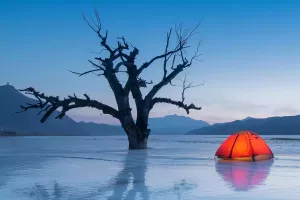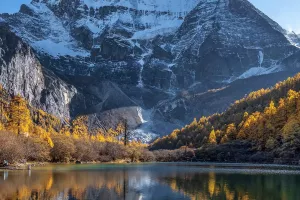Under the sunlight, many creatures in the sea are constantly multiplying, including the growth of reefs. Many reefs in the ocean today are mainly composed of coral, as well as thicker limestone and seaweed. The reef is relatively hard and can withstand the impact of waves and can also withstand the attack of typhoons.
Reef refers to the remains of sea erosion above the sea erosion platform, which is the rock that is very close to the water in our common ocean. Reefs grow on the coasts of the mainland and around the edges of islands, some hidden in the water, some standing above the water. Its size and shape are affected by underwater topographic features and water depths. Friends who observe carefully will find that the reef shape, structure and distribution area we encounter are different from time to time and place. In fact, it is possible that you may not see the same type of reef.
1. Dark Reef
Dark reefs are basically grown in some areas along the mainland coast, and can also be seen around many islands. The distribution of this type of reef is closely related to the nearby topographic features and the depth of the water level. On many coasts there are many coral reefs. Especially when low tide occurs, many reefs are exposed. However, the main material of these dark reefs is coral sand or many shells, most of which are the remains of living things.
2. Barrier Reef
Barrier reefs are rare on shore, generally in shallow waters farther from shore. The formation of many barrier reefs will become coral islands as the crust rises, such as Java Island and Jamaica Islands. The most comprehensive protection in the world is Australia's Great Barrier Reef. The scenery here is pleasant, it is a tropical rain forest in the ocean, and various creatures live here, showing a natural ecological circle.
It stretches from the northeast coast of Australia to the south, intermittently for 2010 kilometers, and the distance from the Australian mainland is about 240 kilometers. The underwater scenery of the Great Barrier Reef is very beautiful and has been rated as one of the seven wonders of the world's waters by international organizations. Australia has listed it as a national marine park and marine nature reserve, attracting many tourists from all over the world every year.
3. Atolls
It is similar to the barrier reef in distribution form, but it does not enclose the land or grow in the ocean close to the land, but forms a system of coral island reefs in the ocean. A fully developed atoll consists of the surrounding reef rings, the diving lagoon in the middle and several coral islands in the lagoon, ranging from a few kilometers to dozens of kilometers in diameter.
Reefs are natural coastal barriers with the potential to dissipate wave energy, reduce coastal erosion, and protect subtropical coastlines. In addition, coral reefs are a key part of the material cycle (carbon, nitrogen cycle) and energy flow, contributing to the self-regulation of the marine environment.


